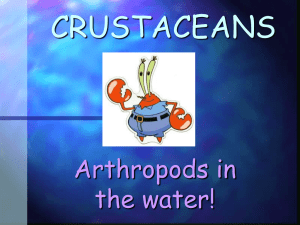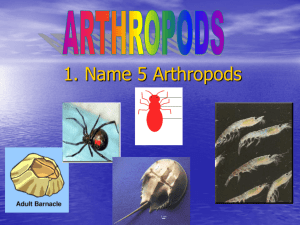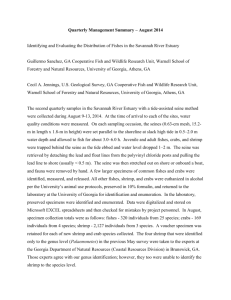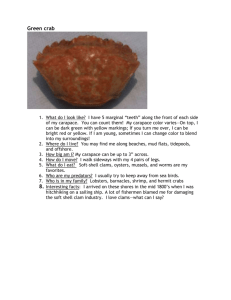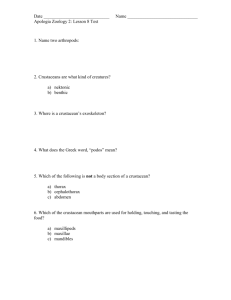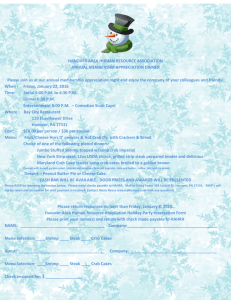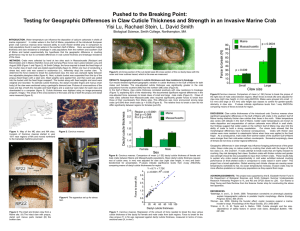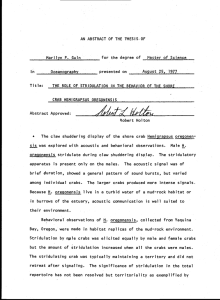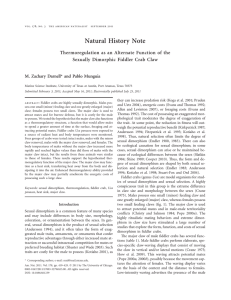Crustaceans #1
advertisement
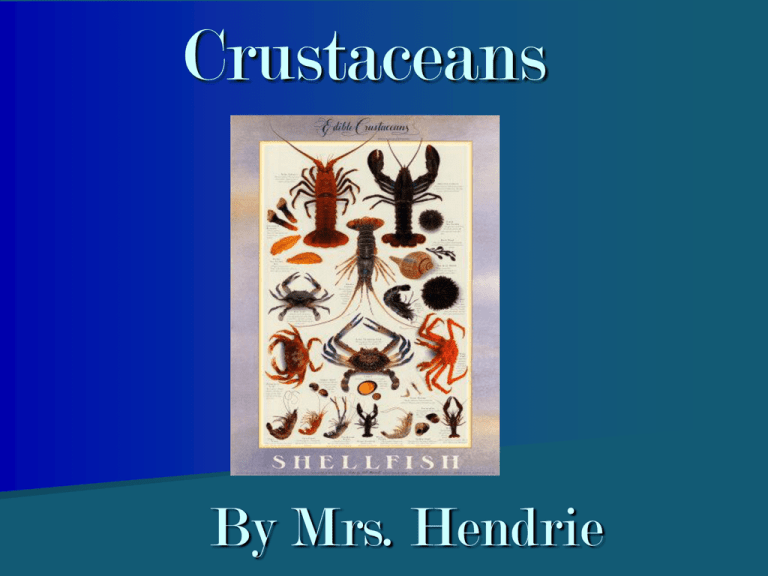
Crustaceans By Mrs. Hendrie Crustaceans Crustaceans are members of a large class of animals with segmented bodies Crustaceans belong to the same major division, or phylum, of the animal kingdom as insects and spiders Included among them are lobsters, shrimp, crabs, wood lice, barnacles, water fleas, and many other animals Lobsters Lobsters have teeth-like structures in their stomach, which grind partially digested food. This structure is called the gastric mill. It thrives in cold, shallow waters where there are many rocks and other places to hide from predators It feeds on fish, small crustaceans, and mollusks Lobsters continued… They range from 8 to 24 in n length and 1 to 9 lb in weight, but have been known to reach lengths of well over 1 yd and weigh as much as 44 lb, making this the heaviest marine crustacean in the world. An average adult is about 9 inches long and weighs 1.5 to 2 lb Main natural predator is the codfish, but other enemies include haddock, certain species of seals, flounder, and other lobsters American lobsters molt two to three times per year while young, but only once a year or less often when fully mature, which is about four to seven years old The old shell is often eaten for calcium recovery and the leftovers are sometimes buried More info http://www.clearwater.ca/media/documents/qa_hardshelllobster.pdf Diagram of a Lobster Many Lobsters have eight walking legs and two large claws (hence the name Decapod-10) Their swimmerets and tail fin are used for swimming in the ocean The larger claw, crusher claw, is used for crushing its food Antenna have hairs that are covered with multiple nerve cells that can detect odors The larger, thicker hairs are found along the edges . These hairs control the flow of water, containing odor molecules, to the inner sensory hairs The mouth is also used to push gravel and sand, and to carry small rocks away A lobster actually chews its food in its stomach, rather than its mouth Crabs Male fiddler crabs have one large claw, which they wave in the air to impress females and intimidate other males If you use some imagination, it looks like the male is playing a fiddle, or violin They feed on a diet comprising of algae, mollusks, worms, other crustaceans, fungi, bacteria and detritus (cord grass) The teeth of a crab are in its stomach. Crabs continued… The biggest crab till date was found in Maryland. It was a male and measured nine inches After losing its claw, a crab can grow it back Crabs are also arthropods i.e. they have segmented appendages, just like a cockroach, butterfly, housefly, etc. The male crabs have narrow abdomens, while the female crabs have broader abdomens (for carrying eggs) Diagram of a Crab All crabs have eight walking legs As you can see the fiddler crab has one small claw and one large claw The large claw is for attracting females and crushing its food The center of its body is called the carapace Shrimp Shrimp differ from their close relatives, the lobsters and crabs, in that they are primarily swimmers rather than crawlers The body is covered with a smooth exoskeleton that must be shed as it grows The shrimp's exoskeleton tends to be thinner than most of the other crustaceans; it is grayish and almost transparent They may grow as long as 9 inches, but most are smaller Shrimp continued… Shrimp swim forward by paddling their abdominal swimmerets and can move backward with swift strokes of their fanlike tails. A shrimp’s heart is in its head They feed on algae and zooplankton Diagram of Shrimp Decapod with ten jointed legs on the thorax Well-developed swimmerets on the abdominal segments Pair of antenna 2 Uropods for swimming 1 Telson to steer them in the water Carapace which protects their head Facts about Crustaceans The largest kind of crustacean, the giant spider crab of Japan, measures up to 12 feet across between its outstretched claws. The smallest crustaceans are water fleas they are as small as 1⁄125 inch long The horseshoe crab is not a true crab, it is more closely related to scorpions than crabs Another interesting fact is that you can eat horseshoe crabs! (there isn’t much meat) Barnacles are a delicacy in parts of Europe and South America. Crayfish are a centerpiece of spicy Creole and Cajun cuisines of Louisiana. Other fun facts go to http://www.hightechscience.org/funfacts.htm Comparing Crustaceans Lobster Crab Shrimp Large claw to crush their prey Large claw to crush their prey and attract females No claws crawler crawler swimmer Heart in abdomen Heart in carapace Heart in its head (carapace) Molt antenna Decapod swimmerets Molt antenna Decapod swimmerets Molt antenna Decapod swimmerets Work Cited http://www.buzzle.com/articles/what-do-shrimp-eat.html http://www.clearwater.ca/media/documents/qa_hardshelllobste r.pdf http://www.dnr.sc.gov/marine/pub/seascience/images/shrimpp artslg.gif http://education.yahoo.com/reference/encyclopedia/entry/shri mp http://www.enchantedlearning.com/subjects/invertebrates/crust acean/label/fiddlercrab/answers.GIF http://www.gma.org/lobsters/lobsterbottomview.gif http://www.Howstuffworks.com http://lifestyle.iloveindia.com/lounge/facts-about-crab1884.html Work Cited continued… http://www.nefsc.noaa.gov/faq/ http://www.planetinverts.com/cardinal_shrimp/cardinal_shrimp_web3.jpg http://thesociallens.files.wordpress.com/2009/05/full-size_blue-crab.jpg http://www.science.unsw.edu.au/media/pics/site/imagecache/CF835EA7C3 B6CA4EB835093D23ED7F55.jpg http://www.windvd.org/resources.php?artid=227
